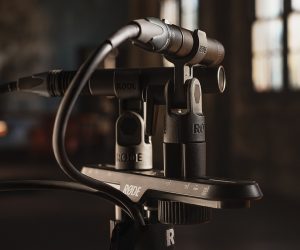
Spotting a Shure SM57 clone
Recently we ran an article discussing a modification you can make to a Shure SM57 microphone. Removing the transformer from said mic can provide yet another ‘colour’ in your mic cabinet, and the mod costs you nothing apart from some time and a bit of solder. AT reader and active AT Forum member, Matt Dever, took to modifying some of his SM57s, only to uncover the fact he actually owned a couple of the infamous SM57 clones – eBay has been rife with these knock-offs for years, and it can be difficult to pick the differences. Here’s what Matt discovered while disassembling a couple of ‘Shure’ SM57s – it may help you discern the real thing from the impostor.
Matt reports: I recently attempted the transformerless SM57 modification, only to discover that the microphone under the knife was, ironically, already transformerless, and consequently not a genuine Shure SM57. I noticed the typical yellow and green wires connecting the diaphragm to the XLR, going straight past an imitation transformer. (Shure uses this colour scheme exclusively – if you see different coloured wiring here it’s almost certain you’re looking at at a fake.) Unbelievably, the clone 57 didn’t have a transformer at all – all I found in its place was a block of rusty metal wrapped in newspaper, enveloped in resin within the microphone barrel. Brilliant – transformer removal already complete! But this had me curious, so I decided to pinpoint as many differences between the faux 57 and a bona-fide Shure SM57, so dismantling began. It immediately became clear that although the mics initially look alike, there were a number of obvious, and other subtle differences between the two.
Here’s a list of the differences I discovered. I am not saying that any of these aspects separate fakes from genuine mics absolutely – it is merely the differences I found between the microphones I had on hand. I should mention that I have multiple real and multiple fake 57s, and the variances I found are true in all of them.
• Firstly, the fakes are slightly lighter in colour compared with the genuine mics, and the grille on the fake 57s doesn’t spin freely, whereas the real microphone grilles do. Also, the gap between where the two barrel sections of the mic screw together is much wider on the real mics – the fakes close tight with barely a gap left. See the image at the end of this article for a better idea.
• The screw holding in the XLR on the fakes is a standard thread, meaning you screw it clockwise (in) to release the XLR. The real ones are reverse thread so you screw anti-clockwise to release the XLR (but the screw still moves inwards).
• There’s also an indented ring at the base of the fake, around the XLR (see below – the clone is on the left).


• As mentioned, the fake 57s have the bogus transformer, thus the yellow and green wires continue straight to the XLR. My real 57s have green/yellow wires connecting the transformer to the diaphragm, and blue/red wires connecting to the XLR. A quick test would be to perhaps check the XLR connector wiring. If you’re seeing green and yellow wiring here, start thinking you’ve been duped.
• Above the metal tab in the XLR connector there is a small letter. My fakes both have ‘A’ marked here, while the real mics exhibit primarily the letter ‘B’s and one has an ‘F’. I’m sure some real SM57s are labelled ‘A’, but if you buy 10 of them and all are ‘A’, I’d be suspicious. Both real and fake designs have ‘Shure’ under the XLR pins.
• The text around the grille is bolder on the real mics, but this could change from batch to batch.
• Both fakes show just over 600Ω over the diaphragm, i.e. across Pins 2 and 3, whereas the genuine mics read around 20Ω across Pins 2 and 3.
• Sonically, handling noise on the fakes is much worse than the real mics.
• The fake microphones don’t sound horrible, but there is certainly a noticeable difference in sound quality. That’s not to say I wouldn’t use the counterfeit models – I’ve used them on many occasions with completely acceptable results. However, they don’t provide the bottom end of the genuine article.
So there we have it. Matt’s first hand account of just how disparate a counterfeit SM57 can be. Of course, there’s many other accounts on the web, as these impostor microphones are plentiful. Being such a workhorse, the SM57 is one of the first mics every recording enthusiast on the planet aims to include in their mic collection. So it’s not surprising the Chinese manufacturing machine has picked up on this and churned out thousands of phonies. When all is said and done, they simply aren’t as good as the real thing.
Check out Matt’s original post on the AudioTechnology Forum.

















RESPONSES